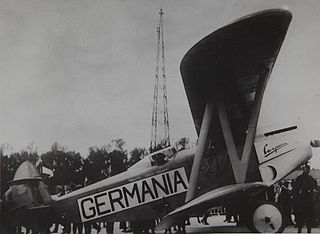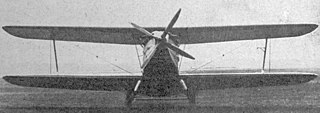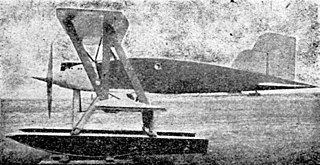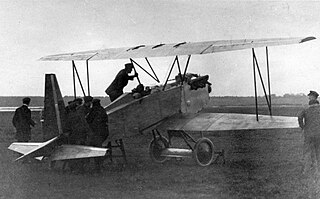Related Research Articles

The AEG C.VIII was a prototype two-seat reconnaissance aircraft of World War I. Two examples were built, based on the successful C.IV design, one of biplane configuration, the other a triplane. Neither version offered enough of an improvement on the C.IV to make mass production worthwhile.

The Arado S I was a biplane trainer built in Germany in 1925. The first of three prototypes was powered by a Bristol Lucifer radial engine, while the other two Arado S.Ia aircraft were fitted with the Siemens-Halske Sh 12. The Siemens-Halske Sh 11 powered the Arado S III, a virtually identical aircraft of which only a single prototype was constructed and sold to Turkey.

The Darmstadt D-22 was a sports-plane of Germany, designed and built by Akaflieg of Technische Universität Darmstadt.

The Curtiss R3C is an American racing aircraft built in landplane and floatplane form. It was a single-seat biplane built by the Curtiss Aeroplane and Motor Company.

The Caspar C 32 was an aircraft developed in Germany for aerial spraying in the late 1920s. It was a single-bay biplane with staggered, equal-span wings that accommodated the pilot and a single passenger or observer in tandem open cockpits. A small, additional horizontal stabiliser was fitted near the top of the tall single tail fin above the main horizontal stabiliser.

The Caspar C 35 Priwall was a German airliner of the late 1920s, of which only a single example was built. It was a large, single-engine, single-bay biplane of conventional configuration with fixed tailskid undercarriage. The staggered, equal-span wings were braced with a large I-strut. Not only were the passengers seated within a fully enclosed cabin, but the flight deck was fully enclosed as well.

The Caspar C 30, aka Caspar LE 30 was an aerial reconnaissance aircraft developed in Germany and built in Denmark in the late 1920s.
The Caspar C 36 was an aircraft developed in Germany for aerial reconnaissance in the late 1920s.

The LVG D.VI was a prototype German biplane fighter built by LVG in World War I.
The Caspar C 23 was a German two-seat biplane sports aircraft that flew in 1925.

The Caspar C 26 was a sports aircraft developed in Germany in the mid-1920s.

The Caspar C 27 was a training seaplane aircraft developed in Germany in the late 1920s.

The Caspar C 29 was a 2-seat floatplane mail carrier and reconnaissance developed in Germany, but built by Dansk Aero in Denmark in the mid-1920s.
The Caspar C 33 was a training aircraft developed in Germany in the late 1920s.
The Caspar CT 1 was a sports aircraft developed in Germany in the early 1920s.
The Caspar CJ 14 was a German fighter aircraft prototype built in the 1920s.

The Caspar CS 14 was a German military aircraft built in the 1920s. At first it was seen as a single seat fighter but was later modified to the reconnaissance role with a second seat.
The Caspar CLE 11 was a cantilever-parasol monoplane cabin airliner built and flown in Germany in 1923.
The Caspar CLE 16 was an airliner built in Germany in the early 1920s.
The Caspar CLE 12 was an airliner built in Germany in the early 1920s.
References
Citations
- ↑ "Caspar C 24". Histaviation.com. Retrieved 26 February 2019.
- ↑ "Caspar C.24". www.airwar.ru (in Russian). Moscow. Retrieved 26 February 2019.